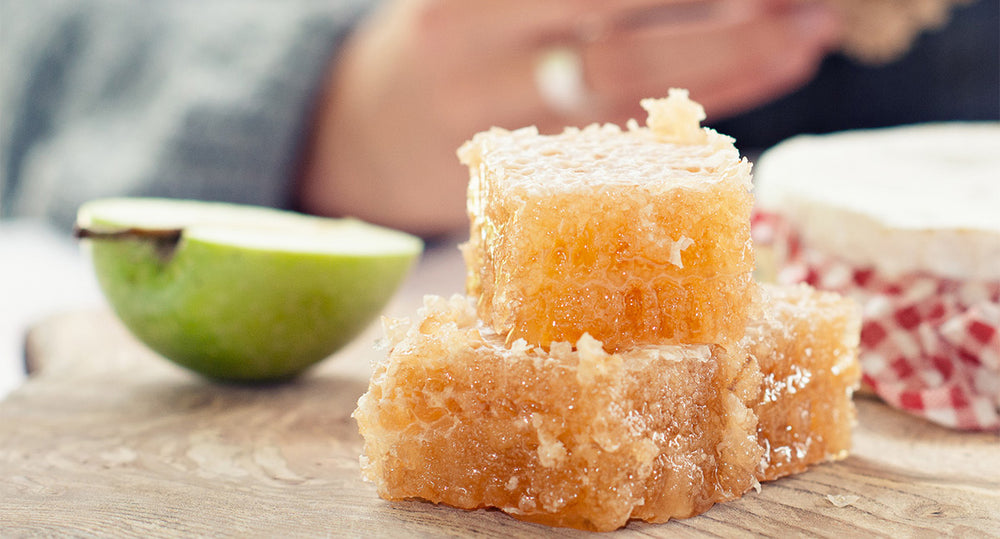In the world of honey, at first glance, you might think there are only two camps – Team Squeezy and Team Manuka. Team Squeezy holds the baton for cheaper, multifloral honeys in squeezy bottles that may or may not be adulterated with sugar syrups and other cheap sweetening ingredients. Team Manuka flies the flag for more expensive, higher quality honey that we might associate with New Zealand.
But at Necta & Hive, we have something else to add to the honey pot – Western Australia’s sweet friend with health benefits, Jarrah honey.
Both Jarrah and Manuka honeys are active, healing honeys, meaning that they have antimicrobial properties. But how they get these properties, and their resulting taste differs significantly…
The Antimicrobial Rating of Jarrah and Manuka Honey
Jarrah honey gets its antimicrobial prowess from an enzyme that’s added by bees during the production of honey. This enzyme is called glucose oxidase. Jarrah honey naturally contains glucose (a sugar) and water. The glucose oxidase reacts with the glucose and the oxygen in the water to produce hydrogen peroxide.
It’s this hydrogen peroxide (which in honey is perfectly natural and harmless to human tissue and the gut lining) that provides Jarrah honey with its active, healing, antimicrobial properties.
Manuka honey contains a substance called methylglyoxal which is responsible for its antimicrobial effects. This means that Manuka is considered a non-peroxide honey.
It’s for this reason that Jarrah honey is up to 50% more antimicrobial than Manuka honey. Jarrah also contains three times more antioxidants than Manuka that help to support a healthy immune system.
What About Taste…?
Since Manuka honey contains methylglyoxal, it has a distinct taste, often described as ‘medical’. The hydrogen peroxide in Jarrah honey also gives it a unique taste, which could be described as antiseptic, but because Jarrah honey is higher in fructose than any other honey, this natural sweetness masks any medicinal taste.
Fructose is a type of fruit sugar, meaning that it gives Jarrah honey a lower GI, or Glycaemic Index. This results in lower blood sugar spikes after eating Jarrah honey than other honeys. Jarrah honey is delicately sweeter than Manuka honey and its robust smoothness is often likened to the flavour of caramel.
Looks wise, Jarrah honey has a deep amber colour, which reflects its high concentration of powerful bioactive healing plant compounds and enzymes.
…And Availability?
Manuka honey is widely available, since the Manuka tree, part of the myrtle family and native to New Zealand, is widely cultivated across New Zealand. Sadly with this, comes widescale deforestation of other forests in order to grow more Manuka plantations to keep up with demand. This demand also sadly means that some Manuka honey isn’t as it seems and is sold by unscrupulous sellers as counterfeit Manuka honey.
Jarrah honey is produced by bees foraging on Jarrah trees, part of the eucalyptus family of trees, native to Western Australia. These trees are sustainable and fast growing and Necta & Hive Jarrah honey is produced from trees that have been responsibly grown without the use of pesticides.
The trees take about 100 years to reach their full height of 40-50m, and live for about 450 years. Unlike Manuka trees, they have a four year flowering cycle, with a honey harvest every two years, which puts Jarrah honey at more of a premium, since it’s rarer than Manuka.
So move aside Manuka, Necta & Hive high TA Jarrah honey is here – try yours today!






